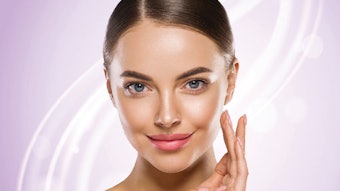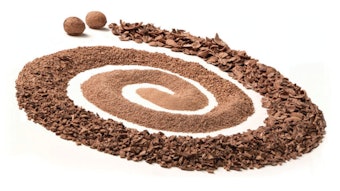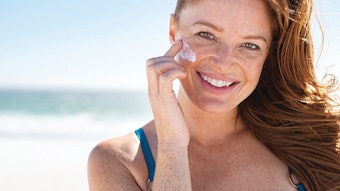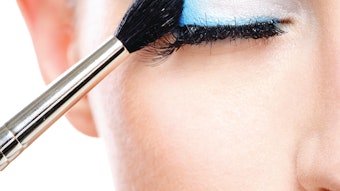While it’s true that blockbuster beauty products may take a while to develop, this process doesn’t need to be overly complicated or copycat what’s already been done. Great product development requires dreaming like a child, thinking like a poet and risking big returns like an entrepreneur. With the right mix of ingredients, the right emotional pull and the right foundation of unbeatable claims to bring it all together, new beauty products can hit all the critical development markers necessary to become the next big beauty breakthrough that seamlessly transforms into a beauty icon.
The era of your grandmother slathering on cold cream may be a charming memory, but the innovation that turned her cold cream into the beauty icon it remains to this day is alive and well. And while compelling storytelling, true product innovation, impressive product claims and noteworthy packaging design are important elements to launching a successful new beauty product, today it’s no longer safe to presume that having a pretty box design, exotic ingredient, celebrity endorsement or even secured distribution is going to turn your idea into the beauty icon it must be to succeed.
Today, newbie beauty brands—and frankly, the big players too—have to look ahead on the innovation road and see their end result (a great product), as well as look behind at all of the consumer-driven touchpoints along the way that lead to five-star products. These touchpoints are critical to hit, disastrous to miss and are sometimes embarrassingly easy to overlook. If you want your product to stand out, stand up and stand over everyone else both in-market and in your target consumer’s mind, it’s time to hang a left for a refreshed POV on the product development for your brand.
What Your Product Will—and Won’t—Do
Today, you still have to think about the obvious strategies—what you want the product to do (treat acne, minimize fine lines, shrink pores, etc.) However, you also have to think about the not-so-obvious strategies—what do you not want your product to do (follow in the footsteps of anyone else, hit the shelves with an ingredient story or technology already being touted by other brands, or offer consumer claims that trail the competition.)
What functional benefits is your target consumer really going to be looking for from this product? Deliver on those, and that consumer will become a loyal one.
Don’t Claim to Be Everything … Unless You’re Going to Deliver
Do what you say you’re going to do or go home. Consumers have selection on their side, and they will not forget if your product claims one thing yet delivers another—or worse, doesn’t deliver at all.
While this may seem like obvious business advice, more than a few new products hit the market claiming the kitchen sink yet only deliver the bare bones. Consumers can smell a gimmick from a mile off, and any chance of a repeat purchase will radically diminish if you’re trying to sell something that your product is just not.
Claims That Bring Acclaim
If you want to set your product up to win, both clinical and consumer tests are imperative—but it’s not just about getting claims. Designing consumer and clinical studies to help you get precise, targeted results is just as important to your outcome as the outcome itself.
You want to prove your product is three times more effective than the leading competitor, or that 100% of consumers saw results after the first use? Then you need to ask the right questions from the start or risk wasting money, time and effort on throwaway claims that have no impact with consumers. Know who you are competing against, what claims they are making, and then structure a winning claims strategy that outperforms them on every level for a winning edge.
Put On Your Consumer Hat
It’s so easily forgotten, but at the end of the day, we are all consumers. When creating new products, remember to think and act like a consumer and not just the beauty product developer who sees beauty from the lab perspective or the marketer who is busy spinning a brand’s story.
Have you tried using your product as intended? Have you followed the instructions and used it as you want and expect your consumer to use it? If not, it’s time to take a few moments to get into consumer mode. Not just from a results perspective, but a time and sensory perspective. Just like you, consumers are busy. If you are asking consumers to take four minutes out of their day to make time for your product and you yourself haven’t done the same, an important part of your ownable product space just fizzled out before your idea even took off. Don’t just go through the motions—go through their motions.
Test … and Test Again
Testing your product with the right, targeted consumer is critical no matter who you are. Premarket testing, designed to get your nearly finished product formula into your target consumer’s hands, is like a sleepover for your product idea. The consumer will try your formulas, tell you their thoughts, and let you know what’s already right about your product, as well as what needs some attention.
Equally as important is market-ready testing. Once your product has reached the finished goods stage, you need to get it into the consumer’s hands again. Send consumers home to use it for four weeks and have them evaluate every aspect of their experience. Did they see results? Awesome. If not, now’s your chance to optimize, optimize and optimize some more before launch.
About the Bandwagon
Don’t be afraid to occasionally hop on the bandwagon. (Seriously.) There’s a reason the beauty bandwagon is a fun place to be—it’s where products pulse and trends take shape. Pay attention to what bloggers are buzzing about and what types of products are starting to hit the mainstream, and then get busy.
Certain beauty innovations (such as beauty balms) set trends and stay hugely popular with consumers, and absolutely should be explored by beauty start-ups. Many new brands enjoy a speed-to-market advantage over established brands, which means if you can get onboard with a trend in only a few months, it’s worth a shot to become a quick consumer favorite while consumers are still obsessed with the trend.
Don’t forget—everything old is new again. Beauty balms may be enjoying a new era of popularity, but they were first conceived 30+ years ago. Be that product.
Starring: Ingredients!
One of the most well-known beauty powerhouses recently launched a new cream that claims to have two million rose stem cells in every jar, an ingredient story that resonates on every level of the beauty kingdom. Obviously, this company has the depth of R&D to grow and harvest its own rose stem cells, but make no mistake—it’s the story that makes this ingredient seem fresh and new, and consequently, this product come alive.
Beauty brands should take note. This kind of smart, clear ingredient story is how emerging brands can—and will—compete in the face of such massive R&D. Have you got exclusive rights to rich delta mud from Tennessee? How about a molecule that protects plants from attack by predators? Whatever your ingredient, telling it’s story in a fresh, concise and compelling new way is music to a consumer’s ear, and it will separate the superstars from the subpars. Forge an emotional connection with your ingredient story and consumers will fall for your brand hook, line and sinker.
Think Like an Icon
At the end of the day, your mother’s cold cream is still, well, your mother’s cold cream—but that doesn’t mean her story doesn’t still charm us all. For new beauty products to succeed, the devil is in the details, and that means your overarching brand story.
In the not-so-distant past, nail polish stories were merely red, blue, pink or beige, yet look at them now. Today nail color is neon, layered, swirled, shellacked, magnetized and dotted with decals, and stories are keeping pace. Just this season, nail care companies have taken the stage with pop stars, gone to Holland to pick tulips, been part of international movie sensations and taken part in the New York City Ballet—and that’s just the beginning.
It’s no secret that when it comes to innovating new brands and products, most of us are looking to the same formulators, ingredients and suppliers. But then what? What your brand decides to do with these elements is what makes all the difference.
Alisa Marie Beyer is the founder and creative director of The Beauty Company (TBC), a global beauty consulting firm offering business, strategy, consumer intelligence and branding. Serving its clients at every stage of development (from start-ups to 13 of the top 15 global beauty companies), TBC intimately understand the industry, the consumer and the market, and becomes an integral part of each client or project team. [email protected]; thebeautycompany.co
Kate Helfrich, vice president with The Beauty Company (TBC), has been a member of the team since 2008. She works directly with Beyer, heading up product strategy and development, running the beauty product testing business and helping to guide overall brand strategy for clients. Prior to TBC, Helfrich was part of the global product development team at L’Oréal for the Maybelline New York brand; managed top beauty accounts and new product development initiatives at EI Laboratories; and ran new product launch strategies and events for a variety of beauty and wellness clients with Bratskeir & Company, a lifestyle PR firm.
![Curious about the latest trends in Beauty and Personal Care innovation? [download free report]](https://native-x.imgix.net/allured/65fde687b40d3e0001e2ce0d/_Thumbnail%20Image%201-19-24.jpg?crop=focalpoint&fit=crop&fp-x=0.5&fp-y=0.5&h=191&w=340&auto=format%2Ccompress&q=70)









